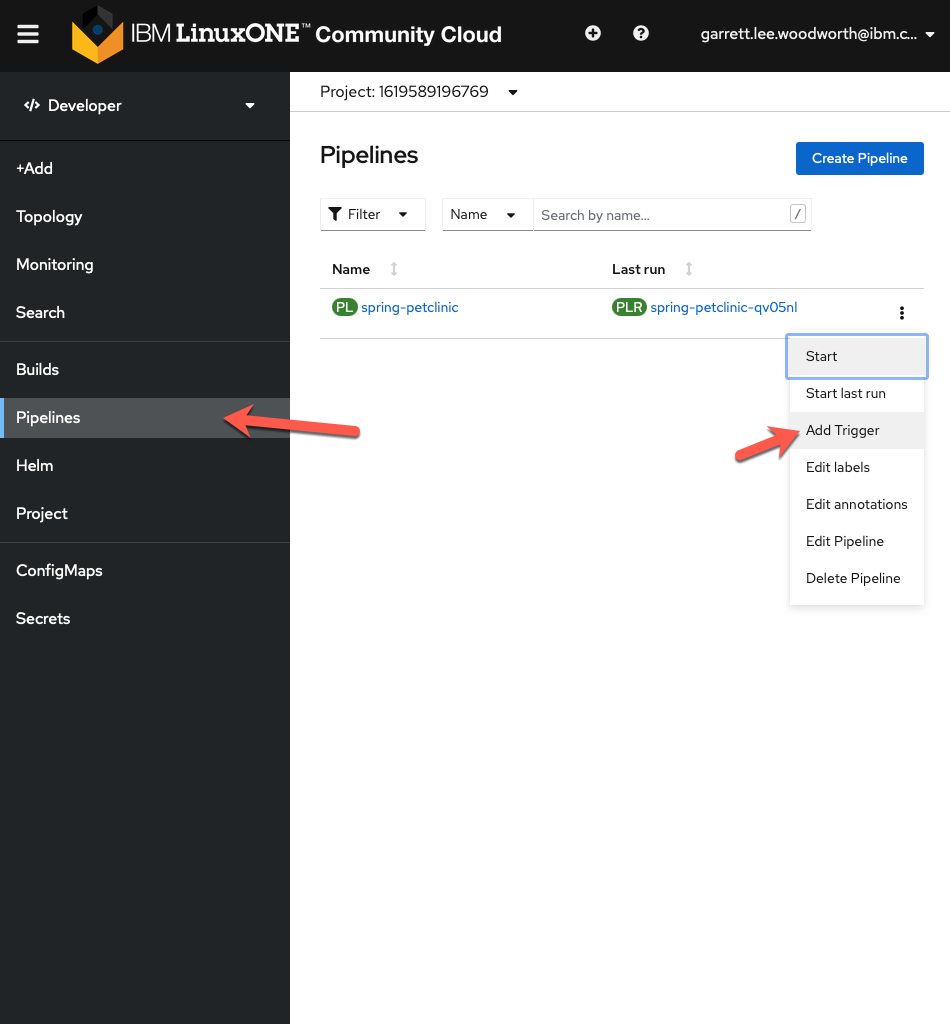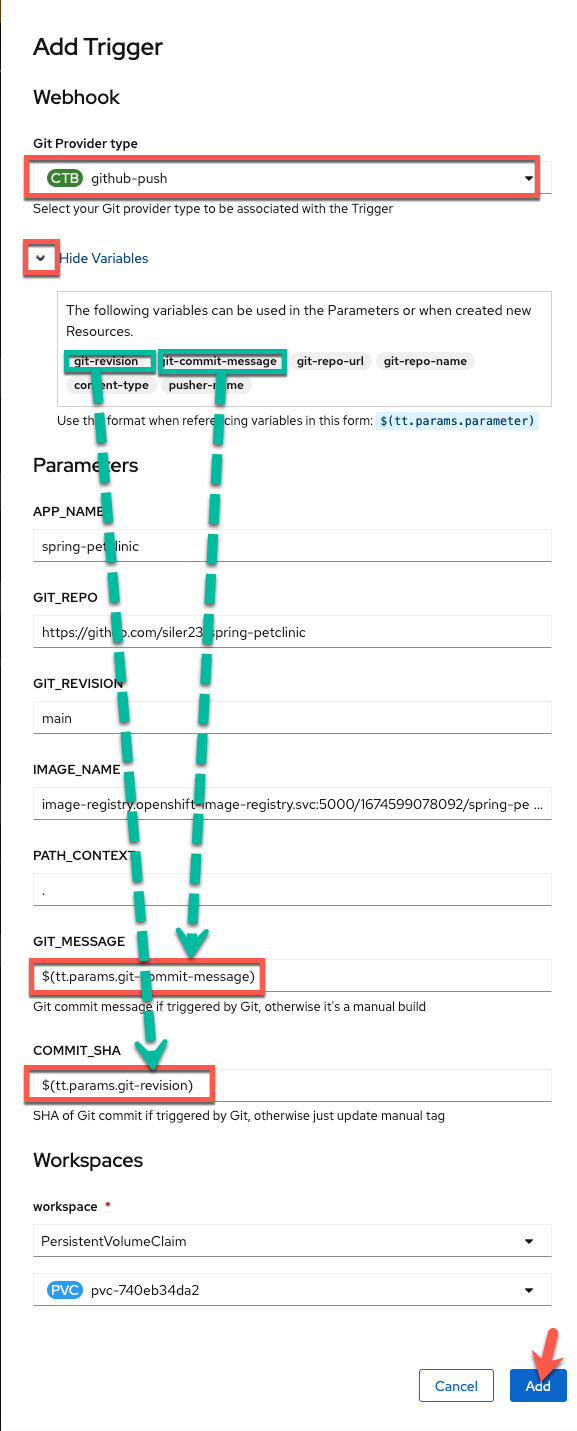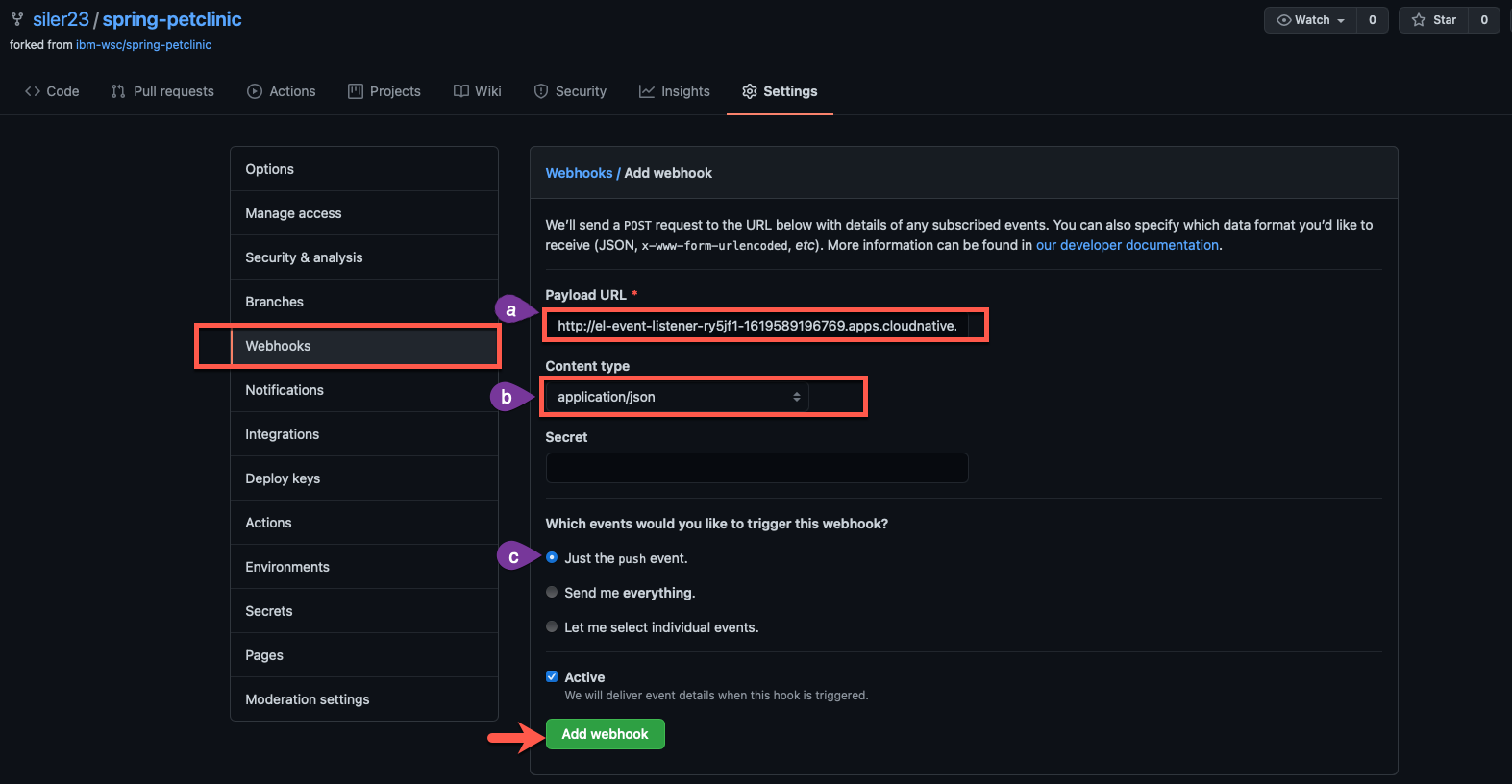Integrating OpenShift Pipelines with GitHub¶
It's time to add the C (continuous) to your CI/CD pipeline.
Add a GitHub Trigger¶
-
Choose
Add Triggerfrom the pipeline menu
-
Configure the trigger as follows (copy and paste boxes below image) and click
Addto add the trigger to your pipeline:
Note
The
Git_Repoparameter should have your GitHub username instead ofsiler23. This should already be correctly filled out for you, so please don't change that tosiler23.Git Provider Typegithub-pushNote
github-pushis in a menu you need to select fromGIT_MESSAGE$(tt.params.git-commit-message)COMMIT_SHA$(tt.params.git-revision)
You are choosing the github-push cluster trigger binding, which is defined out of the box for OpenShift Pipelines. This passes information into a number of different variables which you can list by clicking the expand arrow seen in the picture (It will initially say Show Variables and then switch to Hide Variables when expanded as shown in the picture). You will be using the variables in green boxes in the picture to pass the git commit message (git-commit-message) as well as the SHA of the git commit (git-revision) to the build pipeline from the GitHub webhook that triggers the build.
Setting up Git Webhook¶
Now, you need to set up a webhook from GitHub. You want this to hit your event listener, the pipelines resource which listens for events from outside sources in order to trigger a build. The listener you set up is using the github-push trigger binding to trigger a new pipeline run for your spring-petclinic pipeline passing the github-push parameters mentioned before. You created this event-listener via the OpenShift Pipelines UI when you added a trigger and will see it in the Topology section of the OpenShift UI as another application when you travel back there later. In order to setup your webhook to send a message to the event listener after a git push, do the following:
-
Get the event listener url from the
Detailsview of your pipeline
Find the value listed for your pipeline and copy that value.
-
Navigate to your git fork of the
github.com/ibm-wsc/spring-petclinicGitHub repositoryTip
Your git fork should be in the form github.com/yourusername/spring-petclinic where yourusername is your GitHub username
-
Go to the
settingspage of the repository -
Go to the Webhooks section and add a webhook with:
-
event listener URLas thePAYLOAD_URL -
application/jsonselected as theContent type -
Just the push eventselected forWhich events would you like to trigger this webhook?.

-
-
See the successfully created webhook now listed

Summary  ¶
¶
You created a GitHub webhook for your spring-petclinic repository fork that will trigger a new run of your spring-petclinic pipeline when new code is pushed to your GitHub repo1. You will trigger your pipeline via GitHub in the next section.
-
A more detailed explanation is that when new code is pushed to your GitHub repo, the GitHub webhook will send a payload to the event listener which then interacts with a number of OpenShift Pipelines-associated Kubernetes custom resources that you created when you used the
Add Triggerbutton in the UI. Namely, the event listener will trigger a newPipelineRunof yourspring-petclinicpipeline based on thespring-petclinicTriggerTemplatepassing it the values for the git commit SHA hash and the commit message using the variables populated via thegithub-pushClusterTriggerBinding. ↩
Created: April 29, 2021